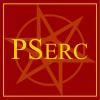The U.S. electric power system is in the midst of a fundamental transition from a centrally planned and utility-controlled structure to one that will depend on competitive market forces for investment, operations, and reliability management. Electricity system operators are being challenged to maintain the reliability of the grid and support economic transfers of power as the industry's structure changes and market rules evolve.
Meanwhile, the U.S. economy depends more than ever on a highly reliable electricity system. New technologies are needed to prevent major outages such as those experienced on August 14, 2003, which cost an estimated $4-10 billion and affected tens of millions of customers.
The Consortium for Electric Reliability Technology Solutions (CERTS) was formed in 1999 in response to a call from U.S. Congress to restart a federal transmission reliability R&D program to address these concerns. Congress, in turn, was implementing a key recommendation from the Secretary of Energy Advisory Board Task Force on Electric System Reliability final report, Maintaining Reliability in a Competitive U.S. Electricity Industry, which stated that DOE should "monitor research on reliability technologies and assure that gaps do not emerge.”
Our partners in research and industry work together to develop and implement technology solutions that support competitive markets while protecting the public interest in reliable electricity service. CERTS meets regularly with an Industry Leaders Council (ILC), comprised of CEOs and senior VP-level representatives from CERTS industry partners, to review critical reliability-related R&D issues facing the electricity sector. Click here [PDF] to see the current list of ILC members.





